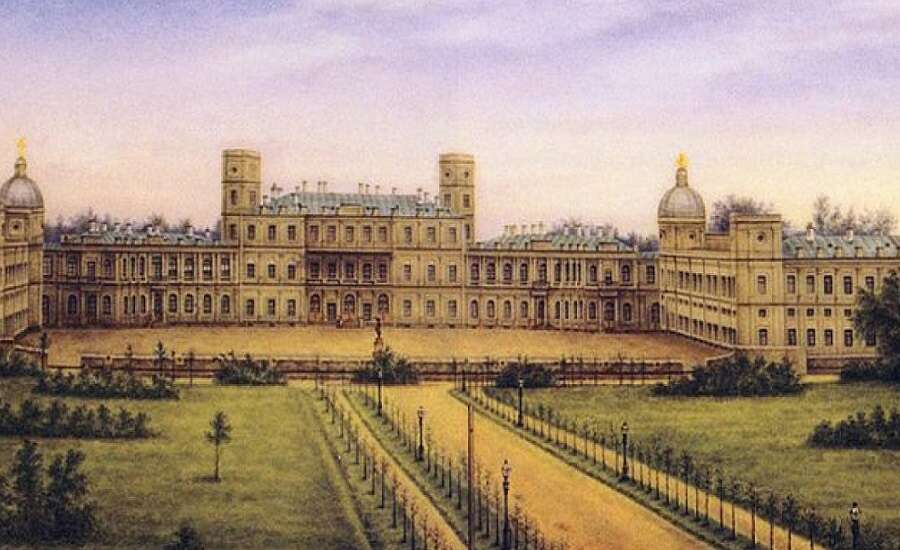
The Gatchina Palace. Painted porcelain by unknown author, Wikimedia Commons
The area south of St Petersburg where Gatchina Palace and Park is located is much older than the city itself. At the turn of the 15th century, it was a small village named Hotchino, inhabited by people from Novgorod, which was later occupied by Livonia and Sweden during a series of 17th century wars. Gatchina eventually became a Russian settlement again during the Great Northern War against Sweden (during which Peter the Great also acquired the territory on which he would found St Petersburg). In 1765, Catherine the Great purchased Gatchina and gifted it to her favourite, Count Grigory Orlov. Between 1766 and 1788, under the direction of architect Antonio Rinaldi, a huge 600-room palace in early Classical style and English landscape garden were erected there.
After Orlov’s death, Gatchina became the residence of Catherine II’s son, the future emperor Paul I. The original palace of the distinguished Italian architect Rinaldi was twice altered: once in an expansion by Vincenzo Brenna in the late eighteenth century and again when Roman Kuzmin reconstructed the palace between 1845 and 1860, during which time it achieved its final form. At the same time, Paul was instrumental in the development of the surrounding town of Gatchina, using his experience from his travels around Europe. Once he ascended to the throne, Paul bestowed on Gatchina the status of ‘Imperial City’.
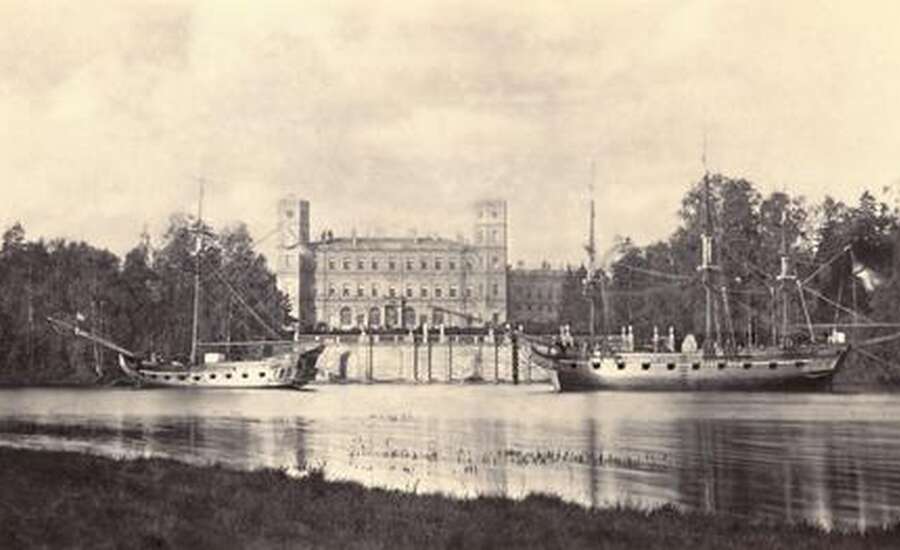
View on Gatchina Palace, 1890s, Wikimedia Commons
In the 19th and early 20th centuries, Gatchina estate and town continued to be generously developed. From 1853 the town was served by a train station on the St Petersburg-Warsaw Railway Line, the first outdoor electric lighting in Russia was installed at the palace in 1881, and Russia’s first military airfield and aeronautical school was established in the town in 1910. Thanks to its quality of life, education and medical services, Gatchina was considered a model town for the rest of Russia.
Did you know? At the 1900 World Exhibition in Paris, Gatchina was even recognised as the best-kept and most comfortable small town in the Russian Empire!
Following the assassination of Alexander II in 1881, Gatchina became the primary residence of the new tsar Alexander III and his family, who were advised to relocate from the Winter Palace for their own safety. Gatchina became the center of court life, and was known as the ‘Citadel of Autocracy’ thanks to Alexander’s reactionary attitude following the death of his father. Though Alexander extensively modernised the palace, he and his family resided in simple rooms which you can still visit today. It is here that the last tsar, Nicholas II, grew up in relative modesty.
After the October Revolution, a museum dedicated to the victorious masses was opened inside the palace. By 1939, hundreds of thousands of people annually explored 100 halls of the royal residence, admiring the original imperial interiors and tens of thousands of exhibits. However, most of the illustrious art collection amassed by the Romanovs and displayed in their ‘suburban Hermitage’ was sold to private collectors. Many festivities and sporting events were organised on the estate during the Soviet period, and the palace also served as a base for military divisions.
By the mid-1930s, concern was brewing in the USSR over the prospect of a war with the fascists, and the inevitable destruction that this could wreak on Russia’s historical and cultural heritage. As early as 1936, a number of plans were devised to evacuate Gatchina’s precious exhibits. But these plans, and the repeated pleas of museum staff, were ignored until the outbreak of war in June 1941. Though most exhibits were hastily evacuated or hidden, Gatchina town was occupied by the Nazis, the park was severely damaged and the palace was looted for its remaining treasures and torched almost to the ground.
Did you know? Between 1923 and 1929 Gatchina was known as ‘Trotsk’ (in honour of Leon Trotsky), and from 1929 to 1944, ‘Krasnogvardeysk’ (in honour of the Red Guards – ‘Krasnaya Gvardiya’)
Restoration work has been ongoing since the 1970s, and Gatchina estate partially reopened for the first time in 1985. In 1990, Gatchina Palace and Park and the surviving buildings of the historical city center were designated a UNESCO World Heritage Site.
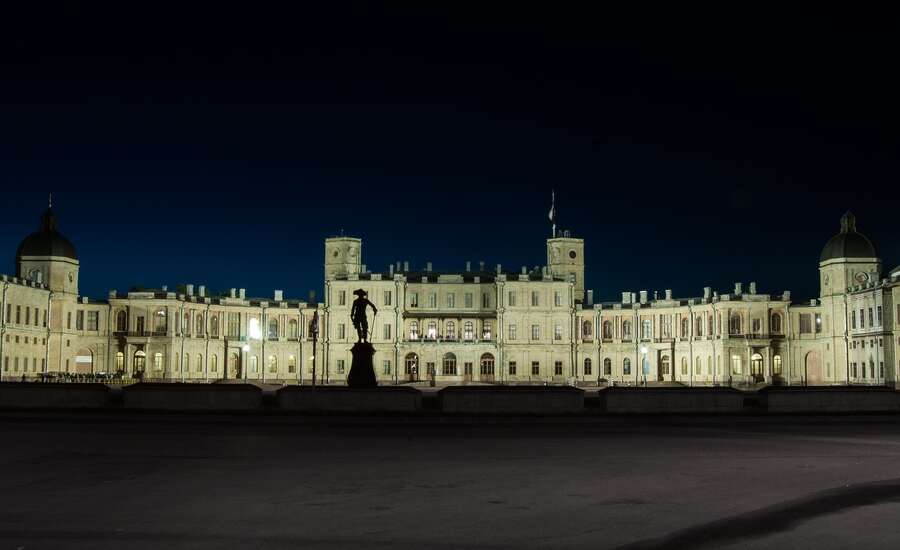
Photo by Сергей Горбачев from Pixabay
In comparison to the candy-coloured suburban palaces of Tsarskoe Selo and Peterhof, Gatchina Palace has a rather austere appearance that more closely resembles a medieval castle. A parade ground faces the south façade of the palace, and two semi-circular galleries and wings extend from the central palace around the sides of the parade ground. The north façade of the palace faces the Gatchina Park and Silver Lake, and two pentagonal signal towers crown the north corners of the central building.
On the first floor there is an exhibition telling the story of the royal residence and its owners, and visitors can explore the personal rooms of Paul I. In summer, it is possible to climb the 191 steps of the western signal tower, for a beautiful view over Gatchina Park. From the basement of the Gatchina Palace you can venture through a secret subterranean tunnel to a grotto on the edge of the Silver Lake, one of the remnants of Rinaldi’s original design.
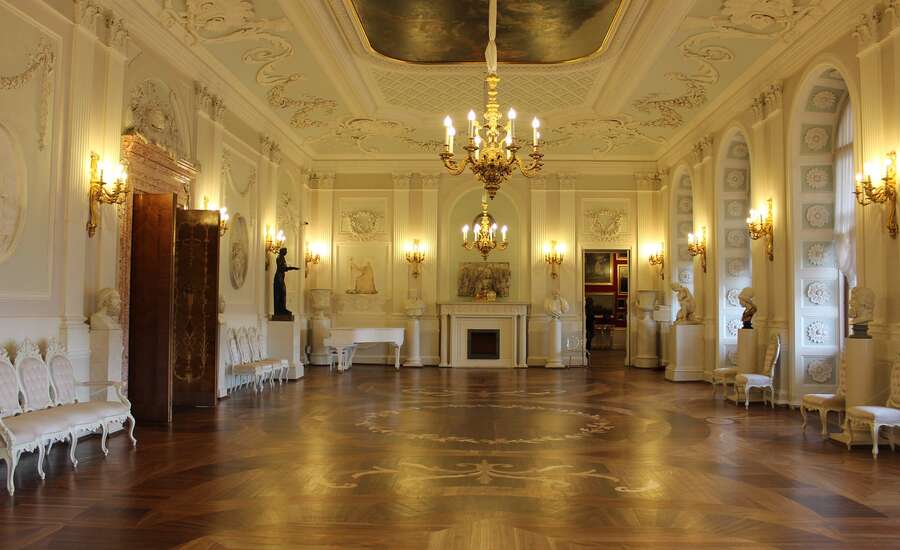
Photo by DashaDee from Pixabay
The second floor exemplifies Classical 18th and 19th century interiors in over a dozen opulently-decorated halls, which were expertly restored after the War. The White Hall, State Bedchamber, Oval Boudoir, and Greek and Chesmensky Galleries are particularly beautiful. The third floor is home to temporary exhibitions, a palace church influenced by Italian Renaissance style, and a marble staircase which is an astounding example of Russian Neo-Renaissance architecture, and descends to the Arsenal Wing
The first floor of the Arsenal Wing is home to the spacious Arsenal Hall, where the royal family entertained their guests and court life was in full swing. On the mezzanine floor are the personal rooms of Alexander III and his family: their bedrooms, studies, bathrooms, living and dining rooms, complete with period furniture and décor, and their personal effects. In comparison to the stately rooms of the central palace, these rooms are unusually modest and cosy, with low vaulted ceilings. There are also exhibitions about Alexander III’s coronation and his family’s life at Gatchina.
Gatchina Park was created at the end of the eighteenth century, and Catherine II was influential in its construction and design. The park occupies 700 hectares and, like other suburban imperial parks in the St Petersburg region such as Pavlovsk and Tsarskoe Selo, was designed as an English-style garden which closely imitated the natural landscape. Later, geometric, manicured French-style gardens were added, as well as a Botanic Garden.
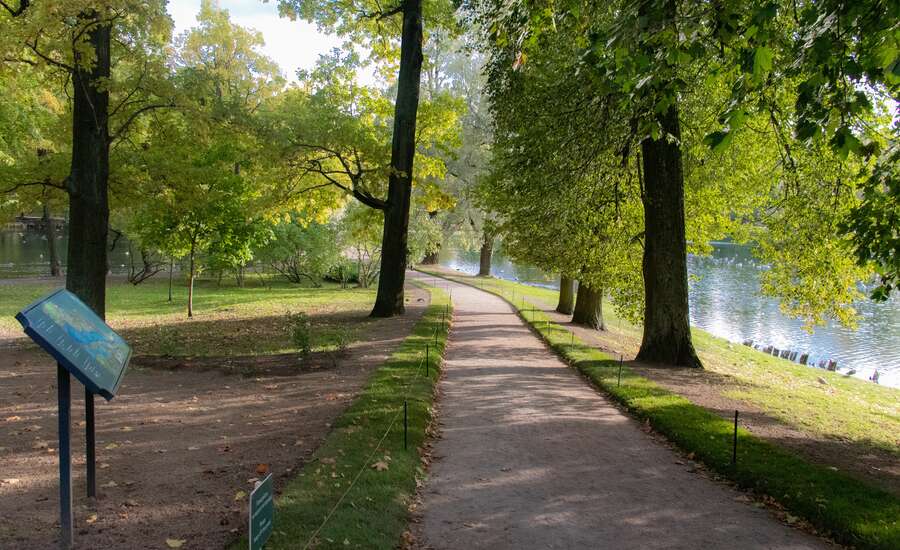
Closest to the palace is the small Silver Lake, and beyond lies the vast White Lake. The park is dotted with ponds and islands, created courtesy of serf labour; its other elements include ornamental follies like the Silvia Gate, Venus Pavilion, Eagle Pavilion, and Karpin Bridge. One of the most fascinating features of the park is the Birch House. It was built as a surprise present from Maria Fyodorovna to her husband Paul I, with a simple log façade hiding beautiful interiors. The nondescript Birch House is concealed behind the ‘Mask’ Portal, a pavilion resembling a Greek triumphal arch.
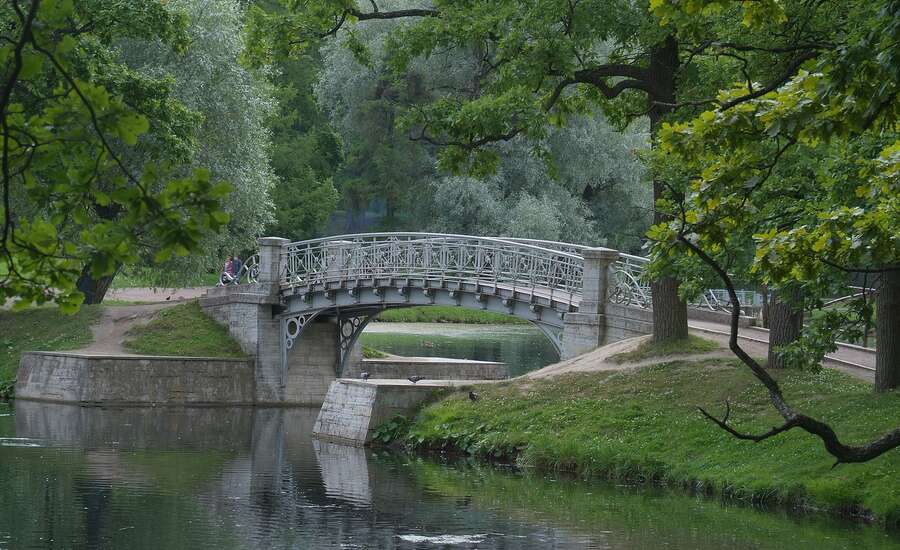
Photo by Елена Яковлева from Pixabay
The Priory Palace’s attraction lies in its unusual architecture, a mix of Neo-Gothic and Russian style with white walls and red roofs, and its picturesque location on the Black Lake in the southeast corner of Gatchina Park. It was built in 1798 under the direction of architect Nikolai Lvov to house the Prior of the Order of Malta, a Catholic military order which was patronised by Paul I.
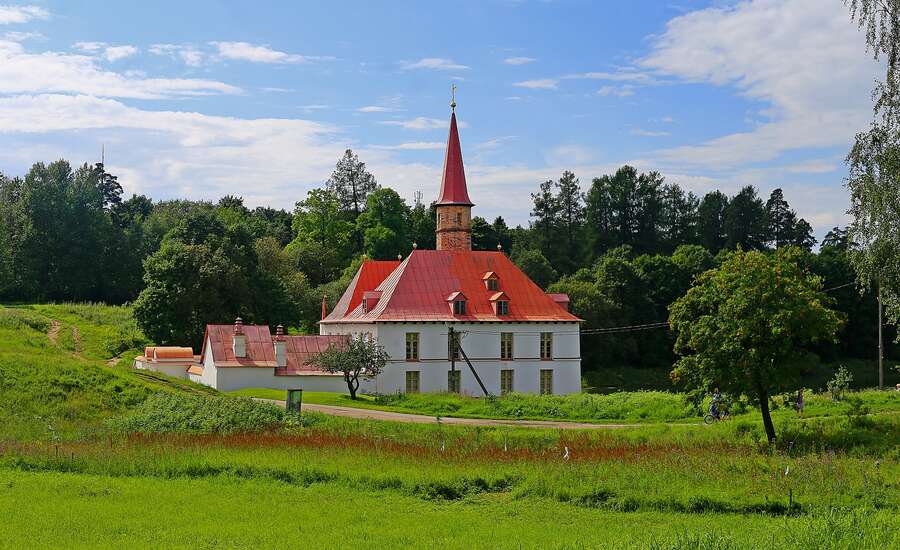
Photo by Luidmila Kot from Pixabay
Gatchina is the largest settlement in the Leningrad Region, located 45km southwest of St Petersburg. Aside from the Gatchina Palace and Park there are a number of other museums, cultural monuments and churches in the city, and the UNESCO-recognised historical centre is a monument of city planning of centuries past. You can find refreshments at various chain and independent restaurants and cafes in the town. In 1999, Gatchina received the award of ‘Most Comfortable City in Russia’ among cities with under 100,000 residents. It was also conferred the title ‘City of Military Glory’ in 2015, in honour of its inhabitants’ bravery and contribution to the war effort.
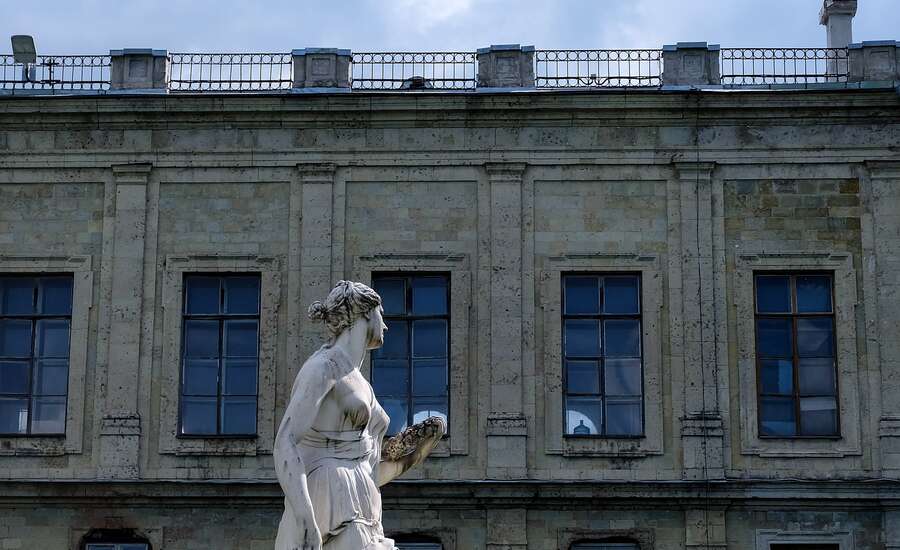
Photo by Maria_Domnina from Pixabay
Address and contact details:
Krasnoarmeysky Prospekt, 1, Gatchina, 188307
Website: https://gatchinapalace.ru/en/
Email: excursion@gatchinapalace.ru
Phone: +7 (81371) 93 492
Suburban train: From Baltiysky Train Station (metro station Baltiyskaya) to Gatchina-Baltiyskaya Train Station. The trains aren’t particularly frequent but the station is a 500m walk to the palace. The journey takes approximately 50 minutes.
Bus/minibus: Buses and marshrutkas (minibuses) run regularly from Moskovskaya metro station. You can take bus no.431, or minibus nos. 18 and 18-A, which depart from behind the statue of Lenin in the square above the metro station. The journey takes about 1 hour.
Opening hours and tickets:
Gatchina Palace and Park are open Tuesday-Sunday from 10:00-18:00, ticket office closes at 17:00. Closed on Mondays.
Adult ticket to the Gatchina Palace and Park costs 450 roubles.
Join us on Facebook
We invite you to become a fan of our company on Facebook and read Russian news and travel stories. To become a fan, click here.
Join our own Russian Travel, Culture and Literature Club on Facebook. The club was created to be a place for everyone with an interest in Russia to get to know each other and share experiences, stories, pictures and advice. To join our club, please follow this link.